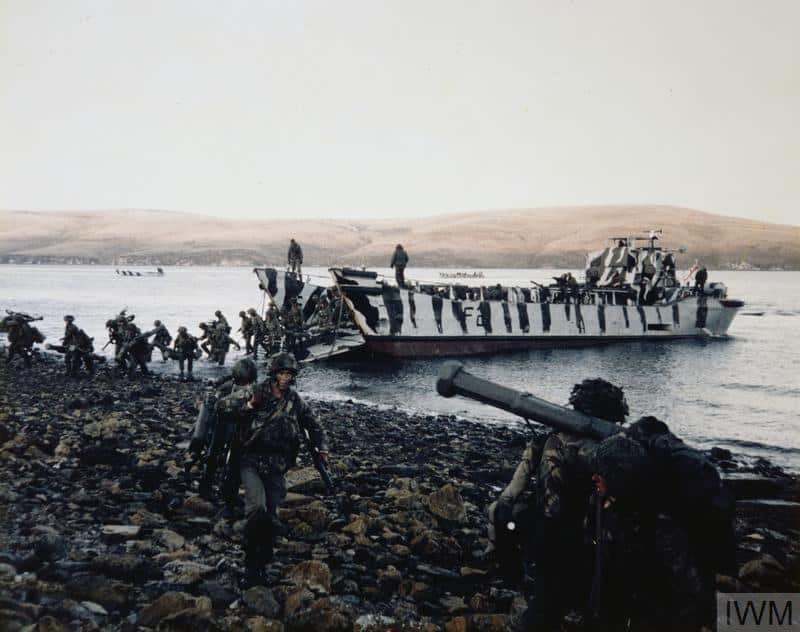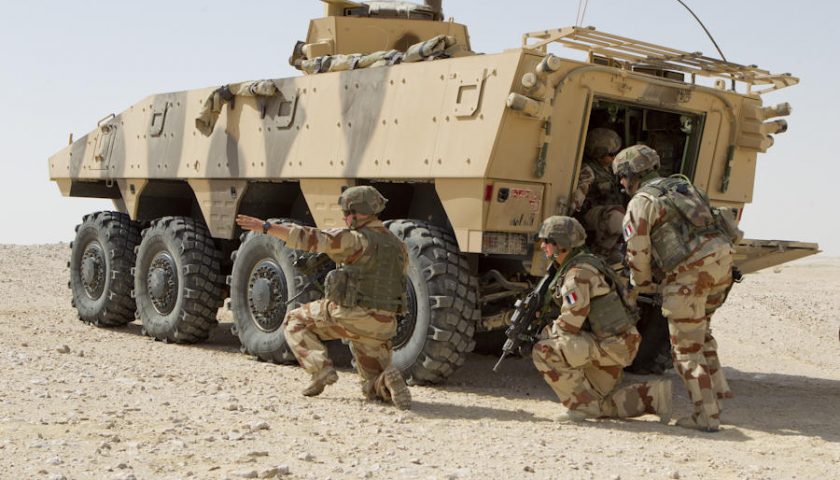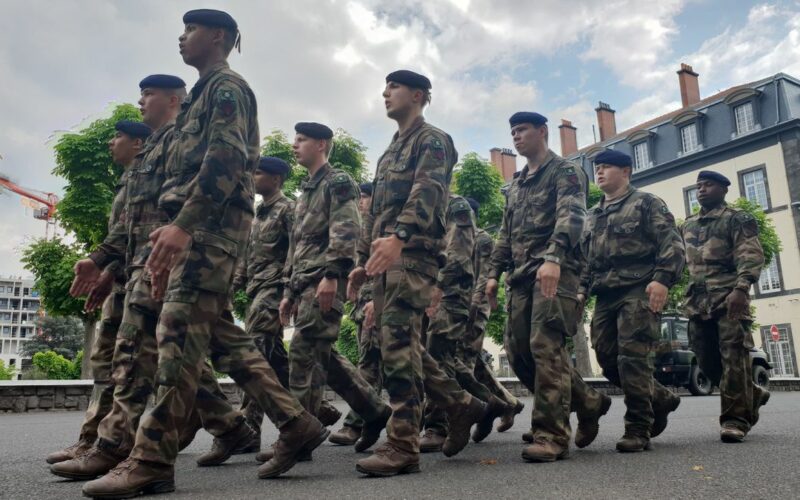Faced with the rise of international tensions, the challenge posed by certain major military powers and the recruitment difficulties encountered, is the majority professional army format in Europe the most suitable?
Following the Second World War, with the emergence of East-West confrontation and the framework entities NATO and the Warsaw Pact, the European countries on both sides relied on armies made up for the most part of conscripts doing military service. compulsory military, and supervised by professional soldiers.
Certain countries, like France or Great Britain, exposed beyond the European theater, maintained exclusively professional units, more adapted to external operations as well as to the wars of decolonization. Because of its insular nature, and its military history, London abandoned compulsory conscription in 1960 to implement only professional armies supported by a voluntary reserve.
For the other European countries, however, it was necessary to wait for the end of the Cold War and the Soviet threat. So, France suspended conscription in 2001, followed in 2004 by Italy, and in 2011 by Germany. Ahead of the return of military crises to European soil, only a few countries maintained conscription armies, including Finland, Denmark, Austria, Greece, Estonia and Switzerland.
Since then, other countries have reinitiated conscription, including Lithuania and Latvia, as well as Sweden and Norway, with the particularity for these two Scandinavian countries, of a conscription applied to both men and women. The others remain today protected by professional armies, very often of reduced size.

Only a few months ago, it seemed certain that the model of a professional army supported by volunteer reservists was the most efficient and the best adapted to the operational needs of the moment. Indeed, due to the growing technological complexity of combat systems, it was becoming difficult to effectively train conscripts over the duration of military service to eventually become effective soldiers.
In addition, the vast majority of engagement scenarios being located beyond the borders of European countries, recourse to professional or voluntary forces was most often necessary. However, the example of the Ukrainian armies made up of conscripts, faced with the Russian forces made up, according to Moscow, exclusively of professionals, at least at the start of the aggression, tends to cast doubt on many certainties in this area.
Today, it is possible to break down army models into 3 main categories. The first, and today the most widespread in Europe, relies on forces exclusively made up of professionals and supported by volunteer reservists. This is the case of France, Great Britain, Germany but also the United States.
The second, on the contrary, is mainly composed of conscripts performing military service, supervised by professional soldiers but also selected conscripts, and forming a large reserve that can be mobilized beyond the conscription period. This is the case for Switzerland, Finland and also Ukraine.
Finally, the third is based on a mixed model, with units made up of conscripts on the one hand, and exclusively professional units on the other. This is the case of Russia, but also of China.
In this article, we will study the advantages and constraints of each of these models, so as to establish which would be the most suitable today for the geopolitical reality for Europeans.
The professional army: an overpowered and flexible but costly force
Following the disappearance of the Soviet threat in the early 90s, but also the lessons of deported conflicts, first in Kuwait, then in the former Yugoslavia, the majority of European armies abandoned the model of conscription or mixed army.
Indeed, between the risk then avoided of having to face some 140 Soviet divisions in Eastern Europe, and the difficulties encountered by many European armies in deploying exclusively professional forces within the framework of coalition actions, the model of professional army imposed itself as an evidence for the majority of the staffs on the old continent. It must be said that this one does not lack finery to seduce soldiers and political decision-makers.

Firstly, it makes it possible to constitute an armed force of a high technicality, well trained and equipped, able to implement modern and sophisticated equipment, this responding perfectly to the evolution of weapon systems over the last 40 years.
In addition, the example of the American and British armies, both professional, and in particular their great efficiency during the Gulf War in 1991, but also in the Falklands a few years earlier, seemed to demonstrate that the professional units showed themselves to be considerably more effective than the units made up of conscripts which had been opposed to them, even if they were numerically outclassed.
Finally, the difficulties encountered by certain European armies, including in France with the National Navy, to join the coalition forces engaged with mixed crews, eventually convinced of the obsolescence of this model, perfectly adapted to the external engagement scenarios to which had to answer the General Staffs.
However, the professional army model, even supported by a significant reserve, is not without imposing significant constraints, first of which a much higher cost for equal mass compared to a conscription army.
Thus, together with the professionalization of their workforce, the European armies experienced at the same time a strong reduction in staff, in men as well as in equipment, without this being accompanied by a frank reduction in defense costs, due to more expensive sales, and equipment which is even more so due to their technological complexity.
On the other hand, the model is complex to implement, in particular to maintain a pyramid of ranks and ages respecting the needs of the armed forces. The recruitment and retention of personnel also became a very important problem for the professional armies, which had simultaneously lost the pool of conscription to create vocations, while directly opposing the civilian labor market.

The conjunction of these factors leads to the greatest weakness of a professional army, its lack of mass. Thus, a country of 69 million inhabitants with a GDP of €2500 billion like France, only has an army of 200.000 professional soldiers, while the war in Ukraine has shown not only that a conflict of very high intensity could last more than a few weeks, but also that the attrition in both men and equipment again constituted a strategic constraint in the conduct of operations.
To remedy this, some countries, such as the United States, rely on a powerful reserve having not only trained soldiers but high-performance equipment and even formed units that can be deployed if necessary, so as to create an auxiliary mass but significantly less expensive than the professional armies that form the front line.
The Conscription Army: Ultimate Defensive Power on a Reduced Operational Contract

75% of this article remains to read,
Subscribe to access it!
The Classic subscriptions provide access to
articles in their full version, and without advertising,
from 6,90 €.
Newsletter subscription
Register for the Meta-Defense Newsletter to receive the
latest fashion articles daily or weekly


[…] […]